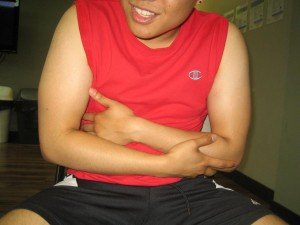Diverticulitis is characterized by inflamed or infected diverticula. The diverticula are protruding sacs or small-sized blisters that form in the lining of the large intestine or colon.
https://www.youtube.com/watch?v=TL9_WKuNfu0
The condition is called as diverticulosis where the sacs initially arise but not infected or inflamed yet. Aside from the large intestine, the diverticula can also form anywhere in the digestive tract.
If there is pain in the lower left side of the abdomen, it indicates diverticulitis especially if it is accompanied by rectal bleeding. The condition can be treated but there is likelihood for it to recur.

What are the causes?
The precise cause of diverticula is still unknown but a diet low in fiber is a contributing factor to the formation of these sacs. A diet packed with fiber with proper hydration can help soften the stool.
A diet that is low in fiber can trigger issues such as constipation. If this condition arises, higher pressure is required to pass stool. The increased pressure in the colon can result to the formation of diverticula. Take note that diverticulitis arises if fecal matter embeds into the diverticula and trigger an infection.
Indications of diverticulitis
Abrupt pain on the lower left side of the abdomen is the usual and severe indication of diverticulitis. The pain can worsen over a span of a few days.
Other indications of diverticulitis include:
- Vomiting
- Nausea
- Abdominal pain and tenderness, usually on the lower left side
- Fever
- Constipation
- Appetite loss
- Gas or bloating
- Diarrhea
- Rectal bleeding that is bright red in appearance
When to consult a doctor
A doctor should be seen so that testing for diverticulitis can be carried out especially if the individual suffers from significant abdominal pain. This is vital if the pain is localized to the lower left side. The presence of blood in the stool or unusual nausea and vomiting might also indicate a need to see a doctor.
These symptoms might not be linked to diverticulitis but they are considered irregular. The doctor must conduct tests to either assess the condition or rule it out as a possible cause.
Management
Depending on the cause, the doctor might recommend treatment at home or at the hospital.
Home treatment
- Bed rest that can range from a few days to a week or longer
- Liquid diet that allows the bowels to rest so that the diverticula can heal
- Prescription antibiotics such as ciprofloxacin, metronidazole or levofloxacin
Medical care
If complications develop, the doctor might suggest treatment in a healthcare facility. The complications that might arise include an abscess or blockage in the bowels. Intravenous antibiotics are started. If there is an abscess, the doctor will drain it with a needle.
The treatment might take 1-2 days. In rare instances, there is a need to stay longer so that the individual is carefully monitored. Complete recovery usually takes a few weeks or even months depending on the lifestyle and diet after the treatment.
